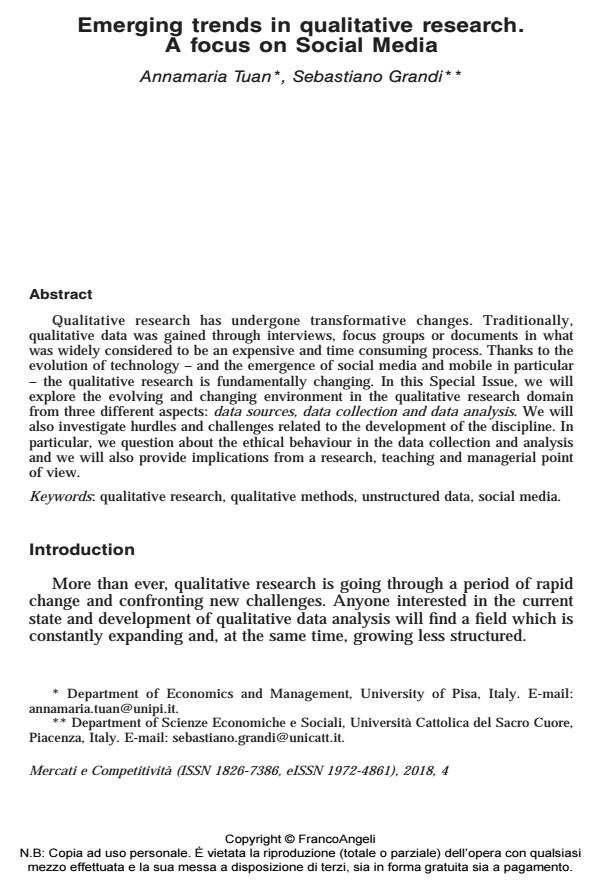Emerging trends in qualitative research. A focus on Social Media
Titolo Rivista MERCATI & COMPETITIVITÀ
Autori/Curatori Annamaria Tuan, Sebastiano Grandi
Anno di pubblicazione 2018 Fascicolo 2018/4
Lingua Inglese Numero pagine 10 P. 17-26 Dimensione file 431 KB
DOI 10.3280/MC2018-004002
Il DOI è il codice a barre della proprietà intellettuale: per saperne di più
clicca qui

FrancoAngeli è membro della Publishers International Linking Association, Inc (PILA)associazione indipendente e non profit per facilitare (attraverso i servizi tecnologici implementati da CrossRef.org) l’accesso degli studiosi ai contenuti digitali nelle pubblicazioni professionali e scientifiche
Qualitative research has undergone transformative changes. Traditionally, qualitative data was gained through interviews, focus groups or documents in what was widely considered to be an expensive and time consuming process. Thanks to the evolution of technology - and the emergence of social media and mobile in particular - the qualitative research is fundamentally changing. In this Special Issue, we will explore the evolving and changing environment in the qualitative research domain from three different aspects: data sources, data collection and data analysis. We will also investigate hurdles and challenges related to the development of the discipline. In particular, we question about the ethical behaviour in the data collection and analysis and we will also provide implications from a research, teaching and managerial point of view.
Parole chiave:Qualitative research, qualitative methods, unstructured data, social media.
- Analyzing Patient Complaints in Web-Based Reviews of Private Hospitals in Selangor, Malaysia, Using Large Language Model–Assisted Content Analysis: Mixed Methods Study Muhammad Hafiz Sulaiman, Nora Muda, Fatimah Abdul Razak, in JMIR Formative Research /2025 pp.e69075
DOI: 10.2196/69075 - It Takes Two to Tango: How the COVID-19 Vaccination Campaign in Israel Was Framed by the Health Ministry vs. the Television News Anat Gesser-Edelsburg, Rana Hijazi, Ricky Cohen, in Frontiers in Public Health 887579/2022
DOI: 10.3389/fpubh.2022.887579
Annamaria Tuan, Sebastiano Grandi, Emerging trends in qualitative research. A focus on Social Media in "MERCATI & COMPETITIVITÀ" 4/2018, pp 17-26, DOI: 10.3280/MC2018-004002